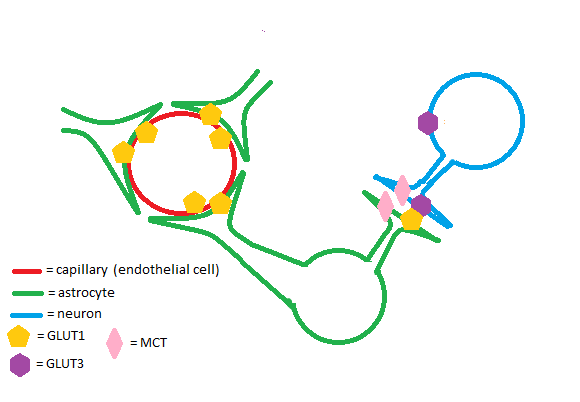Function
The GLUT1 is an insulin-independent glucose transporter expressed by all cells in the body to maintain adequate baseline glucose uptake. Tissues that express GLUT1 at high concentrations include (but are not limited to): the placenta and fetal tissues, epithelial cells of the retina and mammary gland, and the brain.[1]
Brain
The GLUT1 transporter works synergistically with other solute carriers in the brain. Astrocytes and endothelial cells of brain capillaries primarily express GLUT1; neurons primarily express Glut3. GLUT1 has a relatively high Km and is upregulated in times of hypoglycemia in the brain to ensure adequate glucose uptake. Glut3 has a low Km to ensure a steady supply of glucose for neurons even when extracellular glucose concentrations are low.[2]

Disease
Cancer
Oncogenes such as Ras and Src have been shown to upregulate GLUT1 in rat tumors. GLUT1 has also been consistently shown to be upregulated in malignancies of the breast.[3] Upregulation of the GLUT1 transporter has been shown to directly increase cell proliferation in some types of breast cancer.[4]
Relevance
Structural highlights
The GLUT1 transporter has one known site at Asn 45 and varied molecular weights of the GLUT1 transporter suggest glycosylation is dependent on cell type. This glycosylation site is thought to be important for glucose binding to the extracellular portion of the transporter. Mutations in the GLUT1 transporter from Asn 45 to an Asp, Tyr, or Gln residue have been shown to increase the Km of the enzyme.[5]
has a

